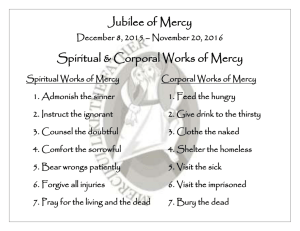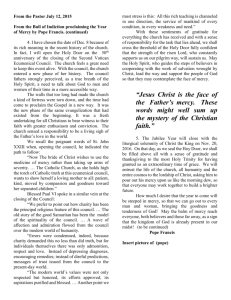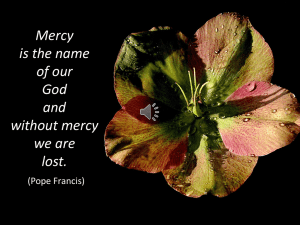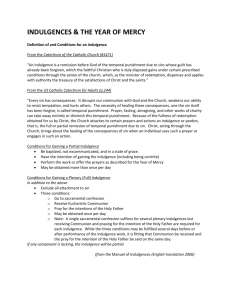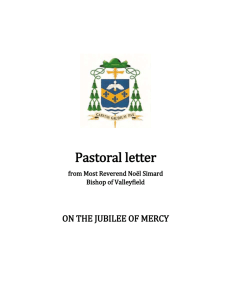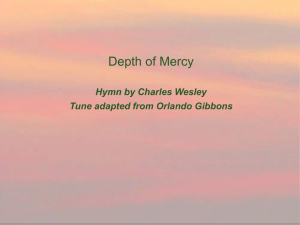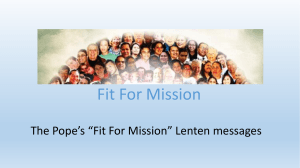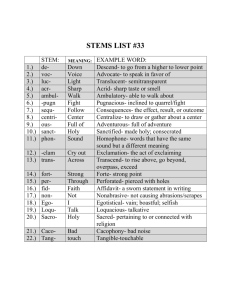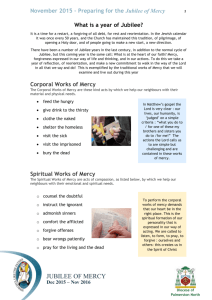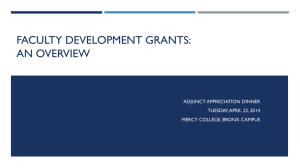Pope Francis and the Year of Mercy
advertisement
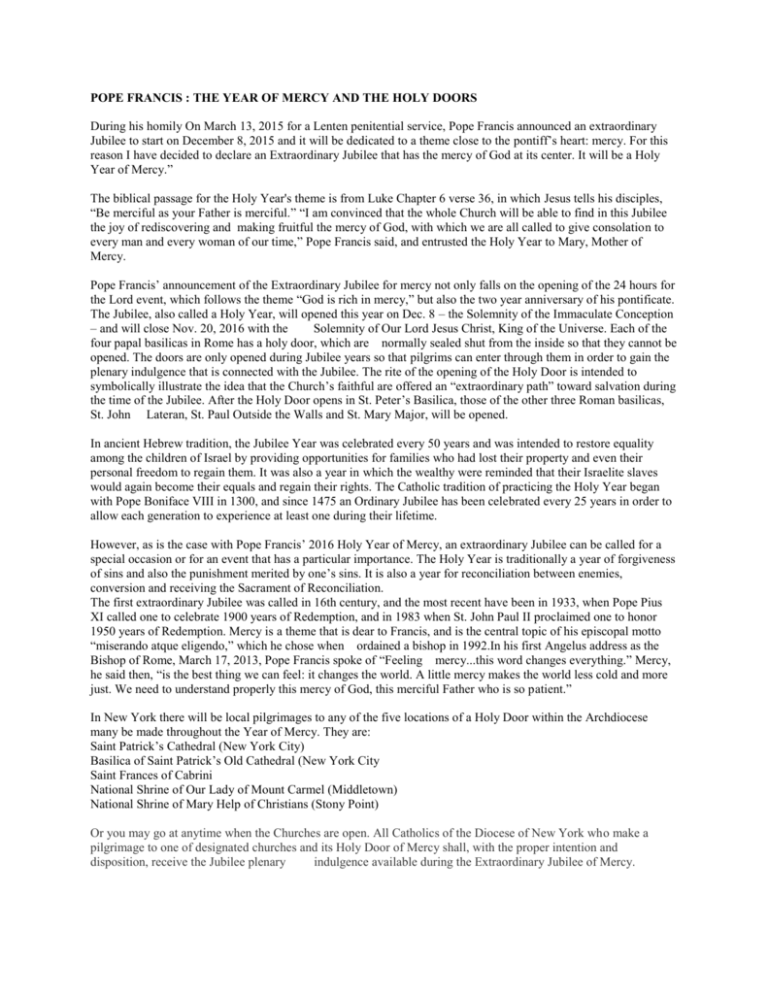
POPE FRANCIS : THE YEAR OF MERCY AND THE HOLY DOORS During his homily On March 13, 2015 for a Lenten penitential service, Pope Francis announced an extraordinary Jubilee to start on December 8, 2015 and it will be dedicated to a theme close to the pontiff’s heart: mercy. For this reason I have decided to declare an Extraordinary Jubilee that has the mercy of God at its center. It will be a Holy Year of Mercy.” The biblical passage for the Holy Year's theme is from Luke Chapter 6 verse 36, in which Jesus tells his disciples, “Be merciful as your Father is merciful.” “I am convinced that the whole Church will be able to find in this Jubilee the joy of rediscovering and making fruitful the mercy of God, with which we are all called to give consolation to every man and every woman of our time,” Pope Francis said, and entrusted the Holy Year to Mary, Mother of Mercy. Pope Francis’ announcement of the Extraordinary Jubilee for mercy not only falls on the opening of the 24 hours for the Lord event, which follows the theme “God is rich in mercy,” but also the two year anniversary of his pontificate. The Jubilee, also called a Holy Year, will opened this year on Dec. 8 – the Solemnity of the Immaculate Conception – and will close Nov. 20, 2016 with the Solemnity of Our Lord Jesus Christ, King of the Universe. Each of the four papal basilicas in Rome has a holy door, which are normally sealed shut from the inside so that they cannot be opened. The doors are only opened during Jubilee years so that pilgrims can enter through them in order to gain the plenary indulgence that is connected with the Jubilee. The rite of the opening of the Holy Door is intended to symbolically illustrate the idea that the Church’s faithful are offered an “extraordinary path” toward salvation during the time of the Jubilee. After the Holy Door opens in St. Peter’s Basilica, those of the other three Roman basilicas, St. John Lateran, St. Paul Outside the Walls and St. Mary Major, will be opened. In ancient Hebrew tradition, the Jubilee Year was celebrated every 50 years and was intended to restore equality among the children of Israel by providing opportunities for families who had lost their property and even their personal freedom to regain them. It was also a year in which the wealthy were reminded that their Israelite slaves would again become their equals and regain their rights. The Catholic tradition of practicing the Holy Year began with Pope Boniface VIII in 1300, and since 1475 an Ordinary Jubilee has been celebrated every 25 years in order to allow each generation to experience at least one during their lifetime. However, as is the case with Pope Francis’ 2016 Holy Year of Mercy, an extraordinary Jubilee can be called for a special occasion or for an event that has a particular importance. The Holy Year is traditionally a year of forgiveness of sins and also the punishment merited by one’s sins. It is also a year for reconciliation between enemies, conversion and receiving the Sacrament of Reconciliation. The first extraordinary Jubilee was called in 16th century, and the most recent have been in 1933, when Pope Pius XI called one to celebrate 1900 years of Redemption, and in 1983 when St. John Paul II proclaimed one to honor 1950 years of Redemption. Mercy is a theme that is dear to Francis, and is the central topic of his episcopal motto “miserando atque eligendo,” which he chose when ordained a bishop in 1992.In his first Angelus address as the Bishop of Rome, March 17, 2013, Pope Francis spoke of “Feeling mercy...this word changes everything.” Mercy, he said then, “is the best thing we can feel: it changes the world. A little mercy makes the world less cold and more just. We need to understand properly this mercy of God, this merciful Father who is so patient.” In New York there will be local pilgrimages to any of the five locations of a Holy Door within the Archdiocese many be made throughout the Year of Mercy. They are: Saint Patrick’s Cathedral (New York City) Basilica of Saint Patrick’s Old Cathedral (New York City Saint Frances of Cabrini National Shrine of Our Lady of Mount Carmel (Middletown) National Shrine of Mary Help of Christians (Stony Point) Or you may go at anytime when the Churches are open. All Catholics of the Diocese of New York who make a pilgrimage to one of designated churches and its Holy Door of Mercy shall, with the proper intention and disposition, receive the Jubilee plenary indulgence available during the Extraordinary Jubilee of Mercy. “What is an indulgence? An indulgence is a way to reduce the amount of punishment one has to undergo for sins. Indulgences apply only to sins that have been forgiven (in the confessional) so there should be no misunderstanding that indulgences “let people off” from sin without admitting they have done something wrong and seeking forgiveness for it. One can apply the good of an indulgence either for one’s own benefit or for that of the faithful departed, but not for another living member of the Church. A plenary indulgence is the remission of temporal punishment for sins already forgiven. The conditions to properly receive a partial indulgence are: Be Baptized Be in the State of Grace Have the intention to obtain the indulgence Perform the works or offer prayers correctly To obtain a plenary indulgence, usually at most once per day, one must: Meet all the requirements for a partial indulgence Not be excommunicated Have no affection for sin, not even venial sin Receive the Sacrament of Reconciliation and Holy Communion and offer prayers of the pope’s intention within the prescribed period of time. ” Source: “A Modern Guide to Indulgences by Edward N. Peters, JD”

